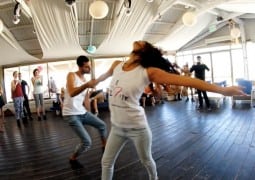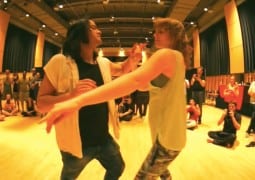Zouk on Water at the Dutch International Congress
Around The World
555 views
Nearly a month has gone by since the 7th edition of the Dutch International Zouk Congress and we’re still seeing video postings from the unforgettable boat party that wrapped up the magical event. Well, here’s ours. A bit delayed but better late than never. Hope you enjoy it!
Tags BoatBoat PartyBredaCongressdanceDancingDutchDutch CongresHollandNetherlandszouk
About: Jessica Carro
You may also like...
Sorry - Comments are closed







